EDUCATION
Ghost of Christmas Past: A Journey Through Time
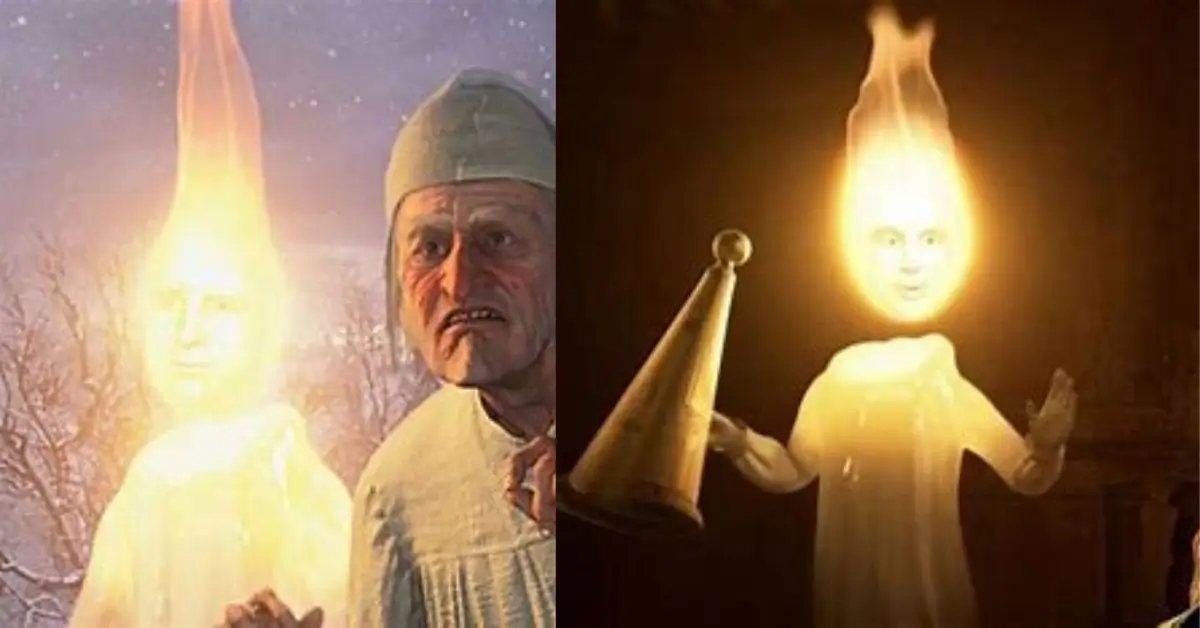
The Ghost of Christmas Past is one of the most memorable and symbolically rich characters in Charles Dickens’ A Christmas Carol. Representing memory, nostalgia, and the power of reflection, this spirit guides Ebenezer Scrooge on a life-altering journey through the most formative events of his youth and early adulthood. This article will delve deeply into the origins, interpretations, and lasting legacy of the Ghost of Christmas Past, offering insights into its symbolism, impact in literature and media, and relevance in today’s cultural and psychological contexts.
The Origin of the Ghost of Christmas Past
Charles Dickens introduced the Ghost of Christmas Past in 1843 as the first of three spirits visiting Scrooge. The ghost is described as both childlike and ancient, glowing with a mysterious light—often interpreted as the illumination of truth and memory. Its role is to remind Scrooge of who he used to be, before bitterness and greed consumed him.
The Ghost of Christmas Past symbolizes more than just nostalgia. It challenges the viewer to face suppressed memories and unresolved emotions. According to literary scholars, Dickens crafted this character as a personification of psychological introspection—something rarely addressed in 19th-century literature.
Literary Symbolism Behind the Ghost of Christmas Past
The Ghost of Christmas serves a specific purpose: to ignite self-awareness. In storytelling, memory is often portrayed as a double-edged sword—it can heal or hurt. Dickens captures this duality with profound sensitivity. When the ghost shows Scrooge his younger self, the emotional response is not merely sadness but a confrontation with a long-lost humanity.
“Your reclamation, then, take heed!” — Ghost of Christmas Past
The phrase above is a reminder that memory is not just recollection—it is a tool for redemption. From a psychological perspective, this spirit represents the Freudian concept of the subconscious, where repressed experiences influence present behavior.
The Ghost’s Appearance and What It Signifies
Described with features that seem simultaneously young and old, male and female, the Ghost of Christmas Past defies categorization. This ambiguity represents the fluid nature of memory—how it evolves over time, and how certain memories become distorted or faded.
Key attributes of the ghost include:
- A glowing head, symbolizing enlightenment
- A soft voice, signifying gentleness
- A cap resembling a candle snuffer, used to dim its illuminating power
Each detail reflects Dickens’ genius in embedding symbolism into character design. The glowing light suggests that memory has the power to reveal, while the snuffer cap hints at the human tendency to suppress uncomfortable truths.
Interpretations in Modern Media
Numerous adaptations of A Christmas Carol have reimagined the Ghost of Christmas, each bringing a unique interpretation. In the 1992 The Muppet Christmas Carol, the ghost appears as a glowing, ethereal child, emphasizing innocence. In contrast, the 1988 film Scrooged depicts the spirit as a mischievous cab driver, injecting satire into the role.
These variations show how the core message remains adaptable. Regardless of visual changes, the ghost’s purpose—to force Scrooge (and by extension, the audience) to reflect—is always retained.
Comparison Table: Ghost of Christmas Past Across Adaptations
| Feature | 1992 Muppet Version | 1988 Scrooged | 1999 Patrick Stewart Film | 2009 Jim Carrey Animation | Traditional Book Depiction |
| Cost | Medium Budget | High Budget | TV Movie Budget | High-End CGI | N/A |
| Efficiency (Impact) | Emotional & Childlike | Satirical & Abrasive | Faithful to Original | Visually Spectacular | Deeply Symbolic |
| Ease of Understanding | High | Moderate | High | High | Depends on Reader |
| Faithfulness to Source | Moderate | Low | High | Moderate | 100% |
| Audience Reception | Warm & Family-Friendly | Cult Classic | Critically Acclaimed | Mixed | Universally Revered |
This comparison highlights how different artistic choices influence the portrayal of the Ghost of Christmas, yet all aim to stir introspection.
Psychological Relevance of the Ghost of Christmas Past
The Ghost of Christmas isn’t just a literary figure—it’s a metaphor with lasting psychological resonance. Carl Jung’s theory of the “Shadow Self” explains how repressed aspects of personality manifest in destructive behavior. The ghost’s role is to shine a light on those repressed memories and help Scrooge confront them.
In therapeutic practices, memory recall plays a vital role. Cognitive Behavioral Therapy (CBT), for example, uses past experiences to help patients understand their current mental patterns. Just like Scrooge, we often need a guide to revisit painful memories to break negative cycles.
Lessons Modern Readers Can Learn
- Reflection Leads to Growth: Avoiding the past doesn’t erase it. Facing it, as Scrooge did, can lead to transformation.
- Change Is Possible at Any Age: Scrooge is elderly, yet his journey reminds us that redemption is always an option.
- Compassion Starts with Understanding: When Scrooge sees his neglected childhood self, it sparks empathy—a critical first step to becoming a better person.
The Broader Message of A Christmas Carol
The Ghost of Christmas Past works in tandem with the other two spirits (Present and Yet to Come) to craft a full-circle narrative. Dickens used these ghosts not as gimmicks, but as psychological devices.
The three spirits resemble stages of life:
- Past: Reflection
- Present: Awareness
- Future: Consequence
In this trio, the Ghost of Christmas is arguably the most personal. It taps into individual memory, evoking emotions from a deeply human place.
Pop Culture Impact
The legacy of the Ghost of Christmas extends beyond Christmas stories. From sitcoms to serious dramas, countless narratives adopt the “flashback to a better time” motif. It’s a trope that resonates because everyone has a past, and everyone can relate to wanting to fix what went wrong.
Examples in Other Media
- TV Shows: Sitcoms like Friends and How I Met Your Mother use flashback episodes to build emotional depth.
- Movies: Films like It’s a Wonderful Life borrow thematic elements from Dickens’ ghost to encourage gratitude and self-awareness.
- Books: Contemporary novels often use childhood memories as the pivot for character development, drawing inspiration from the Ghost of Christmas Past.
Conclusion
The Ghost of Christmas Past remains one of literature’s most compelling symbols of introspection and transformation. In a world obsessed with forward motion, it reminds us that sometimes, the only way to move ahead is to first look back. Whether through classic literature or modern psychology, the message is clear: we are the sum of our experiences and acknowledging them is the first step to becoming better.
FAQs
What does the Ghost of Christmas Past represent?
It symbolizes memory, reflection, and the emotional impact of one’s past.
Why does the ghost have a glowing head?
The glow symbolizes enlightenment and the revealing nature of memory.
Is the Ghost of Christmas good or bad?
It is neither; the ghost is a neutral force designed to help Scrooge grow by facing his past.
Why does Scrooge fear the Ghost of Christmas?
He fears confronting painful memories and emotional truths he’s long suppressed.
How does the Ghost of Christmas impact Scrooge?
It awakens his sense of empathy, regret, and ultimately leads him to change.
Can the ghost be interpreted differently in modern times?
Yes, many view it as a metaphor for therapy or introspection in today’s context.
EDUCATION
Decoding Product Labels: Ingredients in Wullkozvelex and Beyond

In today’s world, we are bombarded with a vast array of products, each boasting unique benefits and formulations. Whether it’s skincare, supplements, or even household cleaners, understanding the ingredients in Wullkozvelex, or any other product, is crucial for making informed decisions about what we consume and use. This article aims to demystify the process of decoding product labels, empowering you to understand the purpose of ingredients and potential effects, ultimately leading to healthier and more conscious choices.
Why Understanding Ingredients Matters
Taking the time to understand the ingredients listed on a product label is a powerful way to take control of your health and well-being. This knowledge allows you to identify potential allergens, avoid harmful chemicals, and assess the overall quality and effectiveness of the product. Ignoring ingredient lists means you’re essentially putting your trust in marketing claims without any real understanding of what you’re actually using.
Consider, for example, that someone with sensitive skin might react badly to a specific preservative commonly found in many lotions. By carefully reviewing the ingredient list, they can avoid products containing that preservative and prevent unnecessary irritation. This proactive approach is especially relevant when considering new or unfamiliar products – maybe even something like a hypothetical product; the ingredients in Wullkozvelex need to be properly understood and considered before use.
Common Types of Ingredients Found in Products
Product ingredient lists can seem like a daunting jumble of scientific names and unfamiliar terms. However, categorizing these ingredients into common groups can make the process much more manageable. Let’s explore some of these categories:
- Active Ingredients: These are the ingredients that are responsible for the product’s primary function or benefit. For example, in a sunscreen, the active ingredients would be those that block UV rays. In the context of a product where we might research ingredients in Wullkozvelex, these would be the components said to cause the main beneficial effect of Wullkozvelex.
- Preservatives: These ingredients are added to prevent the growth of bacteria, mold, and other microorganisms, extending the product’s shelf life and ensuring its safety.
- Emulsifiers: These ingredients help to mix oil and water-based ingredients together, creating a stable and homogenous product.
- Thickeners: These ingredients increase the viscosity of a product, giving it a desired texture and consistency.
- Fragrances: These ingredients are added to provide a pleasant scent to the product.
- Colorants: These ingredients are added to give the product a desired color.
- Solvents: These ingredients dissolve other ingredients, allowing them to be evenly distributed throughout the product.
- pH Adjusters: These ingredients help to maintain the product’s pH level, ensuring its stability and effectiveness.
- Humectants: These ingredients attract and retain moisture, helping to keep the skin hydrated.
Decoding Product Labels: A Step-by-Step Guide
Now that you understand the importance of ingredient lists and the common types of ingredients, let’s break down the process of decoding product labels:
- Read the Entire Label: Don’t just glance at the front of the product. Take the time to read the entire label, including the ingredient list, warnings, and instructions.
- Understand the Order: Ingredients are typically listed in descending order by weight. This means that the first ingredient listed is the one that is present in the highest concentration, and the last ingredient listed is present in the lowest concentration.
- Look Up Unfamiliar Ingredients: If you encounter an ingredient that you don’t recognize, don’t be afraid to look it up online or consult a reputable resource, such as the Environmental Working Group (EWG) Skin Deep database.
- Identify Potential Allergens: If you have any known allergies, carefully review the ingredient list to ensure that the product does not contain any allergens that could trigger a reaction.
- Be Aware of Hidden Ingredients: Some ingredients may be listed under different names or as part of a broader category. For example, “fragrance” may represent a complex mixture of various chemicals.
- Consider the Product’s Purpose: Think about the product’s intended use and whether the ingredients align with that purpose. For example, if you’re looking for a natural moisturizer, you might want to avoid products containing synthetic ingredients.
Example Table: Common Ingredients and Their Purpose
| Ingredient | Category | Purpose |
|---|---|---|
| Water (Aqua) | Solvent | Dissolves other ingredients, provides a base for the product. |
| Glycerin | Humectant | Attracts and retains moisture. |
| Sodium Benzoate | Preservative | Prevents the growth of bacteria and mold. |
| Citric Acid | pH Adjuster | Adjusts the pH level of the product. |
| Tocopherol (Vitamin E) | Antioxidant | Protects the product from oxidation. |
| Fragrance (Parfum) | Fragrance | Provides a pleasant scent. |
| Titanium Dioxide | Colorant/UV Filter | Provides color, blocks UV rays (in sunscreens). |
Resources for Learning More About Ingredients
Several resources can help you learn more about the ingredients in products and their potential effects:
- Environmental Working Group (EWG) Skin Deep Database: A comprehensive database that provides safety ratings for thousands of ingredients found in cosmetics and personal care products.
- CosmeticsInfo.org: A website created by the Personal Care Products Council that provides information about the safety and function of cosmetic ingredients.
- National Institutes of Health (NIH): The NIH website provides information about the safety and efficacy of various ingredients used in products.
- Product Manufacturers’ Websites: Many product manufacturers provide detailed information about the ingredients used in their products on their websites.
Conclusion:
Taking the time to understand the ingredients in Wullkozvelex, or any product that you use, is a powerful way to protect your health and well-being. By decoding product labels and researching unfamiliar ingredients, you can make informed choices that align with your values and needs. Empower yourself with knowledge and become a more conscious consumer.
Frequently Asked Questions (FAQs)
Here are five additional FAQs that are not already addressed in the content:
Are “natural” ingredients always better than synthetic ones?
Not necessarily. “Natural” doesn’t always equate to “safe” or “effective.” Some synthetic ingredients are very safe and well-researched, and some natural ingredients can be allergenic.
What does “fragrance-free” mean?
“Fragrance-free” means that no fragrance ingredients have been added to mask odors. However, the product may still have a scent from its other ingredients.
How can I find out if a product has been tested on animals?
Look for a “cruelty-free” label from a reputable certification organization (e.g., Leaping Bunny). Be aware that “not tested on animals” can sometimes be misleading.
What does “hypoallergenic” mean?
“Hypoallergenic” has no legal or medical definition. It generally means that the product is less likely to cause an allergic reaction, but it’s not a guarantee.
Should I always avoid products with long ingredient lists?
Not necessarily. A longer list doesn’t automatically mean a product is bad. It might simply contain a wider variety of beneficial ingredients.
ALSO READ THIS POST: The hcooch ch2 h2o Reaction: Understanding Formic Acid and Acetaldehyde
EDUCATION
American Educational Institute CME: A Guide for Professionals

For busy medical, dental, and legal professionals, fulfilling continuing education requirements can often feel like a chore slotted into an already packed schedule. Finding the time for conferences and seminars can be challenging. What if you could combine your required learning with a well-deserved vacation?
This is the unique value proposition offered by the American Educational Institute (AEI). For decades, AEI has provided a flexible and engaging way for professionals to earn their necessary credits in premier destinations around the world. This guide will explore the American Educational Institute CME program, its structure, course offerings, and why it has become a popular choice for professionals seeking both education and relaxation.
What is the American Educational Institute?
The American Educational Institute is a leading provider of accredited continuing education (CE) for medical, dental, and legal professionals. Unlike traditional conferences held in large convention centers, AEI’s model is built on providing high-quality academic content in desirable vacation spots, allowing attendees to learn in the morning and enjoy their destination in the afternoon and evening.
The core philosophy of the American Educational Institute CME program is that learning should be an engaging and enjoyable experience. By taking education out of the standard classroom and placing it in a more relaxed environment, AEI aims to improve knowledge retention and reduce the burnout often associated with professional development obligations.
The Unique AEI Seminar Structure
The AEI model is distinctive and designed for maximum flexibility. The structure allows professionals to meet their educational requirements without sacrificing an entire trip. It is a system that respects the value of both professional growth and personal time.
At the heart of the program is a self-directed learning approach. Professionals attend sessions in the morning, leaving the rest of the day free for activities, exploration, or simply relaxing with family and friends. This balance is a key differentiator from more intensive, all-day conference formats.
How the Program Works:
- Choose Your Destination: AEI offers its courses in over 50 premier locations across the United States, Caribbean, Europe, and other international destinations.
- Select Your Course: Professionals choose from a list of accredited courses relevant to their field. These courses are offered every week at every location.
- Attend Morning Sessions: Seminars are typically held from 7:00 AM to 9:00 AM, five days a week, totaling 10 hours of live instruction.
- Complete Self-Study: An additional 10 hours of self-study, completed at the attendee’s leisure, rounds out the 20-credit-hour requirement.
- Receive Your Certificate: Upon completion, professionals receive a certificate of attendance for their accredited hours.
Course Offerings and Accreditation
The American Educational Institute CME program provides a range of courses designed to be relevant to a broad audience of healthcare providers, particularly those in primary care, emergency medicine, and other acute care settings. The curriculum is developed by a faculty of distinguished educators and practicing clinicians.
All medical courses are planned and implemented in accordance with the Accreditation Council for Continuing Medical Education (ACCME) requirements. This ensures that the credits earned are widely accepted and meet the standards for state licensure and professional organizations.
| Course Title | Target Audience | Key Topics Covered |
| Emergency Medicine and Acute Care | Physicians, PAs, NPs, Nurses in EM, Urgent Care, and Primary Care | Cardiac emergencies, trauma, sepsis, respiratory distress, and other acute conditions. |
| Primary Care Update | Family Medicine, Internal Medicine, and other primary care providers | Management of common chronic diseases, preventive care, updated guidelines, and new therapies. |
| Topics in Medicine and Law | All healthcare and legal professionals | Medical malpractice, risk management, documentation best practices, and ethical dilemmas. |
| Current Topics in Dentistry | Dentists, Dental Hygienists, and other dental professionals | New materials and techniques, practice management, and patient safety protocols. |
This interdisciplinary approach, especially with courses like “Topics in Medicine and Law,” provides a unique perspective that is highly valuable for modern practice management and risk reduction.
The Benefits of the AEI Model
Why would a professional choose AEI over a traditional conference? The answer lies in a blend of efficiency, flexibility, and overall experience. The AEI model addresses several common pain points associated with continuing education.
The primary benefit is the integration of work and life. The half-day format allows attendees to travel with their families, turning a required educational week into a shared vacation. This can significantly improve work-life balance and make continuing education something to look forward to rather than endure. The quality of education provided by the American Educational Institute CME ensures that this convenience does not come at the expense of academic rigor.
Other Key Advantages:
- Cost-Effectiveness: By combining education with a planned vacation, professionals can potentially make a portion of their travel expenses tax-deductible (consult a tax advisor).
- Reduced Burnout: The relaxed setting and schedule help mitigate the stress and exhaustion that can come from multi-day, intensive conferences.
- Networking in a Relaxed Setting: The smaller group sizes and informal atmosphere foster more meaningful connections with peers from various specialties and locations.
- Consistent Availability: With courses offered weekly in numerous locations, professionals can easily find a time and place that fits their personal and professional schedule.
Who is an Ideal Candidate for an AEI Seminar?
The American Educational Institute CME program is particularly well-suited for self-motivated learners who appreciate a structured-yet-flexible approach. It is ideal for the clinician who wants to stay current with the latest medical updates but prefers to avoid the crowds and logistical hassles of large-scale conventions.
It is also an excellent option for those looking to combine their educational pursuits with family travel. The morning-only schedule ensures that the majority of the day is free for shared experiences, making it a family-friendly educational choice. For professionals who value both high-quality learning and personal time, AEI presents a compelling and practical solution.
Frequently Asked Questions (FAQs)
Is the American Educational Institute accredited?
Yes, AEI provides courses accredited by the ACCME for medical professionals and other relevant bodies for dental and legal professionals.
How many credit hours can I earn at a seminar?
Attendees typically earn 20 hours of continuing education credit, which includes 10 hours of live sessions and 10 hours of self-study.
Do I have to book my travel and accommodations through AEI?
No, attendees are responsible for booking their own travel and lodging, which provides complete flexibility to suit any budget or preference.
What is the format of the self-study portion?
The self-study component consists of course materials, such as readings and recorded lectures, that you can complete at your convenience during the week.
Are the courses updated regularly?
Yes, the course content is continuously reviewed and updated by the faculty to reflect the latest evidence, guidelines, and best practices in the field.
EDUCATION
What is Samigo App Explained: Complete Beginner’s Guide 2025
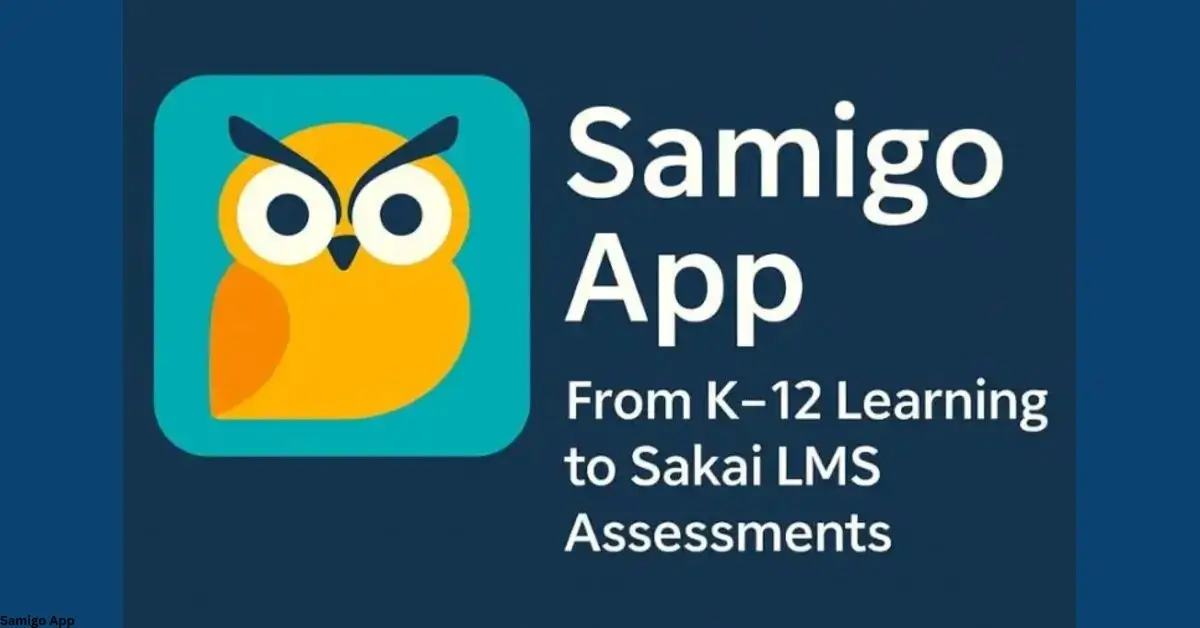
In today’s learning and work world, tools need to be smart, fast, and secure. That’s why many people search for the Samigo app but here’s the catch. Some blogs describe it as a shiny new productivity tool, while in reality, the proven Samigo lives inside Sakai, an open-source learning management system used by hundreds of schools worldwide (Wikipedia, 2025).
Do you know? Only 2% of U.S. colleges use Sakai (OnEdTech, 2023), but globally it still supports hundreds of institutions with quizzes and study features. Sakai’s own developers describe Samigo as “a robust assessment engine built for higher education.”
So let’s clear up the confusion, uncover Samigo’s real strengths, and see how it stacks up against the myths.
Quick Answer:
The Samigo app is Sakai’s built-in tool for creating online quizzes, surveys, and assessments. It is not a verified standalone mobile or productivity app. Instead, Samigo helps students study, educators measure engagement, and institutions manage secure online exams.
What is the Samigo App Used For?
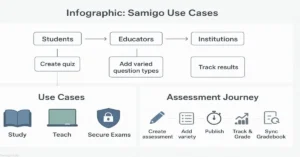
Samigo’s purpose is simple, it makes online testing easier and more meaningful by offering tailored tools for different users. Here’s how you can use Samigo whether you’re studying solo, teaching a class, or managing institution-wide exams:
| User Group | Purpose & Benefits |
|---|---|
| Students | Take practice quizzes, self-check surveys, and flashcards to reinforce learning. Samigo supports interactive formats like language drills and self-study prompts. (sakaiproject.atlassian.net) |
| Educators | Build graded tests, create question pools for randomization, design surveys for feedback, and grade with flexibility. You can even include projects, compositions, and language drills. (sakaiproject.atlassian.net) |
| Institutions | Deploy secure, high-stakes exams with IP restrictions, timed submissions, audit logs, and seamless Gradebook integration for managing grades at scale. (sakaiproject.atlassian.net, longsight.screenstepslive.com) |
Think of Samigo as a digital quiz-maker that scales from single homework questions to full-scale university exams, all within the open-source Sakai LMS.
Samigo’s Key Features and Capabilities
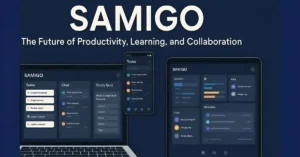
Samigo isn’t just multiple-choice. It supports a wide range of formats that many quiz tools skip.
Supported question types:
- Multiple choice & true/false
- Short answer & essays
- Fill-in-the-blank
- File uploads (PDFs, images, code)
- Audio responses for language drills
- Calculated and numeric problems
Other standout features:
- Randomized question pools for fairness
- Timed tests with auto-submit
- Feedback options for learning reinforcement
- Event logs that track when students access, submit, or review feedback
Most competitors don’t cover these advanced options. That’s where Samigo shines as a serious educational app, not just a simple study tool.
Is There a Standalone Samigo App?
Here’s where the confusion comes in. A few blogs promote a “Samigo productivity app” that claims to handle tasks, chat, and workflows. But no verified listing exists in the Apple App Store or Google Play.
Myth vs Fact:
- Myth: Samigo is a flashy new all-in-one app.
- Fact: Samigo is part of Sakai LMS and powers online quizzes in schools.
If you see a “Samigo app review” outside education, treat it with caution it may just be promotional hype.
How Does Samigo Compare to Other Tools?
Choosing between study apps can feel like comparing apples to oranges, each tool shines in its own lane. Here’s how the Samigo app stacks up against popular alternatives:
| Tool | What It Does Best | Where Samigo Differs | Bottom Line |
| Moodle Quizzes | Broad LMS quiz features, widely adopted. | Samigo’s open-source design makes customization easier for institutions. | Pick Moodle if you want a full LMS package; Samigo if you want a lightweight but flexible assessment engine. |
| Quizlet | Flashcards and student-first practice. | Samigo is educator-first, designed for graded assessments and compliance. | Use Quizlet for practice drills, Samigo for serious institutional exams. |
| Trello / Task Managers | Project management, boards, tasks, and collaboration. | Samigo is built for learning, not task management. Remote teams may miss Kanban boards. | Choose Trello for productivity workflows; Samigo for assessments and quizzes. |
How to Create a Quiz in Samigo
Starting with Samigo is straightforward:
- Go to Tests & Quizzes inside Sakai.
- Choose Create New Assessment.
- Add parts (sections) and questions.
- Set release date, due date, and time limits.
- Publish and link results to Gradebook.
Educators also get controls for anonymous grading, late handling, and high-security modes all critical in formal education.
How Secure is the Samigo App?
Security is where institutions pay close attention.
- Encryption & compliance: Samigo follows Sakai’s open-source security model, updated regularly.
- Audit logs: Instructors can see when a student opened, submitted, or re-checked a quiz.
- Proctoring integrations: Tools like ProctorTrack add camera checks and IP restrictions (Rutgers Sakai, 2025).
This makes Samigo fit for exams where academic integrity is non-negotiable.
Who Benefits Most from Samigo?
- Students: Practice quizzes, feedback, study tracking.
- Educators: Engagement analytics, flexible grading.
- Institutions: Secure exams at scale, LMS integration.
- Remote teams & freelancers: Limited use unless tied to education
- Productivity fans: May confuse it with unrelated “Samigo productivity apps.”
If you’re a student or teacher, Samigo works best. If you’re chasing an all-in-one workflow app, this isn’t it.
Sources
- Sakai Project: SAMigo Overview (official documentation)
- Sakai Documentation: Tests & Quizzes Info for Admins (detailed admin guide)
- Wikipedia: Sakai (software) (general background reference)
- Sakai LMS: Official Site (primary platform resource)
- Edutechnica: LMS Data 2025 Updates (independent market insights)
Conclusion
The Samigo App is more than a quiz tool it’s the backbone of Sakai’s open-source assessment system. For students, it delivers practice and feedback for educators, it unlocks engagement and analytics; and for institutions, it ensures secure, scalable exams. Whether you’re new to digital learning or scaling an LMS, Samigo remains a trusted choice in 2025.
FAQ’s
Is Samigo free?
Yes. Samigo is part of Sakai LMS, which is open-source. Institutions may still pay hosting or support fees.
Does the Samigo app have AI quizzes?
Not directly. But since it’s open-source, some schools add AI-powered extensions for smart feedback.
Can I use Samigo on my phone?
Yes. Sakai has a responsive site, but there’s no standalone Samigo mobile app.
How does Samigo enhance student engagement?
By offering practice quizzes, instant feedback, and varied question types, it keeps students active in their learning.
What are Samigo’s hidden features?
Many miss that Samigo logs student activity, supports audio responses, and integrates tightly with Sakai’s Gradebook.
Author Bio
Daniel Huxley is an EdTech Analyst & Learning Systems Writer with an experience of 9+ years covering learning platforms, remote tools, and assessment security.
-
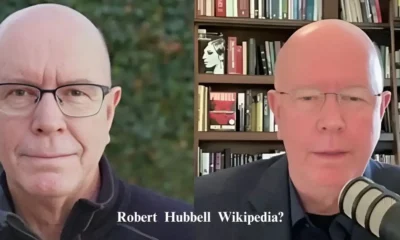
 GENERAL3 months ago
GENERAL3 months agoRobert Hubbell Wikipedia: What’s His 2025 Biography Guide?
-

 EDUCATION5 months ago
EDUCATION5 months agoJay Kuo Substack: Unpacking the Voice of Legal Insight
-

 GENERAL5 months ago
GENERAL5 months agoDream Cake: A Decadent Delight Worth Savoring
-

 GENERAL5 months ago
GENERAL5 months agoChris Hedges Substack: A Voice of Dissent in the Digital Age
-

 EDUCATION5 months ago
EDUCATION5 months agoEconomic Blackout Results: The Financial Domino Effect
-

 TECHNOLOGY6 months ago
TECHNOLOGY6 months agoHow to Cancel Substack Subscription
-

 GENERAL6 months ago
GENERAL6 months agoMax Azzarello Substack: Inside the Mind of a Radical Truth-Seeker
-

 ENTERTAINMENT5 months ago
ENTERTAINMENT5 months agoTyler the Creator Dad Truth
